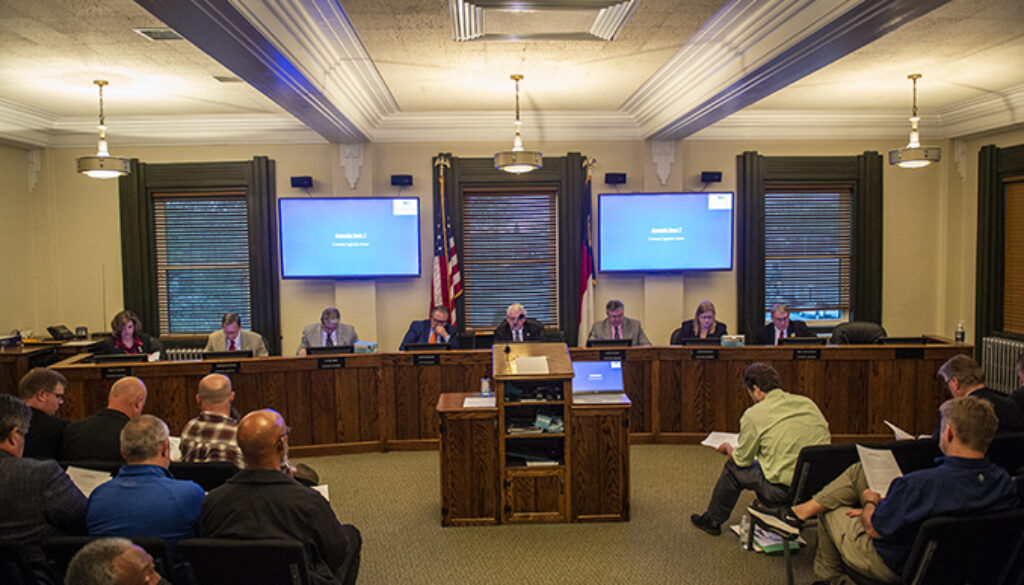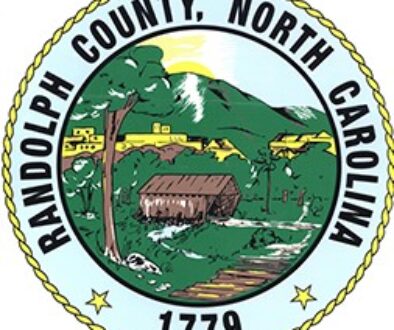City council hears public comments on development, alcohol
ASHEBORO — The City of Asheboro Council met last Thursday with hearings for two residential projects and the presentation of the final report on the city’s sewer system on the agenda. While no decision is imminent, the topic of allowing alcoholic beverages to be possessed outside of restaurants and bars was also discussed in the public comments.
Freese and Nichols, Inc. presented their final report and findings for the city’s sanitary sewer collection system before the council. The engineering firm had been commissioned to assess the wastewater collection system and see where the sanitary overflow problem areas were and how then the system could be improved.
“There were three main project goals here,” said Charles Archer, account director for Freese and Nichols. “They were to document the existing wastewater structure, to evaluate the system capacity and what is contributing to these overflows and then to develop a capital improvement plan to help you make the necessary investments to reduce the impact of infiltration and inflow of stormwater into the system.”
After a 14-month process, the firm came up with two capital improvement project designs, one based on current capacity, what the most efficient use of funding would be and the other one based upon risk, what the biggest needs are based on criticality.
The capacity design involves ten projects valued at $44.1 million, with the top five projects valued at $12.7 million. The risk-based design identified $12 million of capital improvements based on criticality, with the top five projects valued at about $6.2 million.
The next step of the process will be for the city council and staff to apply for funding for these projects.
The council then held a legislative hearing for the application by Brian Thomas to rezone property located west of 2513 Old Cedar Falls Rd. from R10 Medium-Density Residential to R10 Conditional Zoning designation to allow specific residential planned unit development.
“The current proposal is for 160 units and the associated infrastructure such as recreational areas for the residences as well as the open space area that is required by the city code,” said Community Director Trevor Nuttall, who presented the design before the council.
Public comments and the council’s discussion focused on the density of the units per acre, street designs, and existing infrastructure were key topics at the meetings. After the discussion and comments, the council decided to table the application until the next meeting.
“I think this is a great place for a neighborhood,” said Mayor David Smith. “I think it’ll be very successful, but I think long-term it’ll be asking for some difficulties.”
The council then approved the preliminary sketch design for The Timber Ridge subdivision on the south side of East Allred Street.
Despite public concerns also being raised about this potential development — density concerns, aesthetics, issues with runoff — under city ordinance, the council’s vote on the design was limited to whether the required standards were met.
“We are all very aware of your concerns, we understand your concerns, but we have a responsibility that we have to accept what meets our requirements,” said councilmember Jane Redding on the decision. “There are things down the road that will probably impact this development, but for now, it meets the requirements.”
The city council also set a public hearing for the annexation petition for three parcels of land on Sterling Street (208, 209, 205) for May 5.
Following a traffic study done by Disaster Risk Management Programme (DRMP) for the Dixie Land Acres neighborhood, the council approved a recommendation for the speed limit reduction down to 30 mph for Kenmore Street, Mackie Avenue, Pepperidge Road, Timberlane, Brookdale Drive, Plantation Circle, Larkwood Avenue, Arrow Wood Road, Sequoia Avenue, Mark Avenue, Colony Road, Rocky Lane, Salem Court, Pine Grove Drive and Manor Circle.
The council also approved the establishment of four-way stops at the intersections of Brookdale Drive and Sequoia Avenue and Pepperidge Road and Sequoia Avenue.
While no significant action was taken regarding the proposed social alcohol district in downtown Asheboro, the council took public comments on the issue, most of which were against allowing alcohol to move along the city streets and between downtown businesses.
Concerns mainly focused on how it will put increased pressure on businesses that don’t want alcohol on their premises, the morality of alcohol consumption, concerns of increased public intoxication and crime, and the question of if there is any real benefit to businesses from this type of district.
The council’s only vote regarding the proposed district was to fix the verbiage on a potential ordinance regarding when alcohol consumption would be allowed.
The City Council will next meet on May 5.
 Twitter
Twitter Facebook
Facebook Instagram
Instagram


